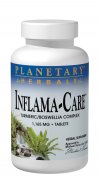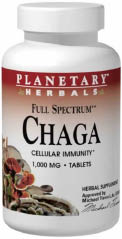|
Search Term: " Hardwood "
What is Xylitol?
Date:
February 09, 2014 08:50 AM
What is Xylitol?
(https://vitanetonline.com:443/forums/Index.cfm?CFApp=1&Message_ID=3012) History And Uses Of Xylitol
Date:
February 07, 2012 07:50 AM
Xylitol is the 5-carbon sugar which is found within the birch tree sap and it's naturally found in the fibers of various vegetables and fruits. This is a sugar-alcohol sweetener commonly used as the sugar substitute. History of xylitol Although discovered in the 19th century during the Second World War, Xylitol has been recognized ever since the tardy 1800s. The researchers from Germany and France were the first individuals to try to produce this product approximately 100 years ago, but ended up creating syrup-like consistency mixture. This product became commercially available in the 1960s and the commercial process is still the same as it was during the 1960s. Before 1943, the scientists' categorized this sugar with various sugary carbohydrates (polyols) and it lingered so till the beginning of the war-associated deficiency of sugar which initiated the call for an alternate sugar. This initiated further research in to the xylitols insulin-independent properties, this resulted in discovery of its other biological benefits. In 1962 this chemical was introduced in the infusion therapy demonstrating that it can be introduced to ill individuals. The commercial production process involves extraction of Polysaccharides rich in Xylose from various agricultural by-products and Hardwoods. These are hydrolyzed with various intense acidic treatments and then it is purified before hydrogenation is done. This process needs a lot of harsh chemicals and is quite expensive and inefficient. It was until 1970 that the odontological benefit of xylitol was ascertained in Finland, Turku. The initial study of the effects of this sugar on the dental plaque began during the same year. This resulted in large scale production of xylitol, in 1974 by the Finnish sugar company. Sugar-free dental product was first launched in Finland which was a xylitol chewing-gum. How xylitol works This sugar can prevent cavity in various ways by actually blocking the tooth decaying process. The bacteria causing decay cannot ferment this sugar into acids as it does with other sugars including dextrose, fructose, glucose and sucrose. This results in production of less acidic by-product thus interfering with the dental plaque environment which favors decaying. This results in prevention of tooth demineralization. The high pH condition caused by xylitol sugar is not favorable for the cariogenic bacteria which are responsible for decaying. This results in fewer bacteria in the plaques and long-term exposure has an effect on which type of bacteria will prevail within the plaque. This also inhibits the growth of specific xylitol-sensitive bacteria strain. Since they cannot breakdown this sugar, they end up not reproducing and growing in population. The lack of fermentable sugars results in creation of anti-cavity effect. The starvation effect created by this sugar prevents accumulation of cariogenic bacteria in the plaques. Long term xylitol exposure results in change of predominant cariogenic bacteria to xylitol-resistant strains from xylitol-sensitive. This xylitol-sensitive strain of bacteria cannot colonize the plaque since they have less adhering capabilities. The less acidic condition in the dental plaque interface created by this sugar can initiate demineralization. Demineralization occurs when the plaque interface is at a pH of 5.5 or below since fewer bacteria live in the plaques. Studies have showed that demineralized tooth samples immersed in a solution containing 20% xylitol experienced a great remineralization degree. This is noted in the deep and middle tooth layers.
(https://vitanetonline.com:443/forums/Index.cfm?CFApp=1&Message_ID=2558) Fight Inflammation With Herbs from Planetary Herbals
Date:
June 02, 2010 04:39 PM
These lifestyles and environmental change can challenge immune health, so that the various components of the immune system are not able to carry out their protective functions. Or our immune systems can go into overdrive, often leading to a state called metabolic inflammation. A Powerful Herbal Blend Inflamma-Care is a potent, herbal response to the metabolic inflammation that can result from inappropriate immune response. The main component of inflama-care is the rhizome of the curcuma spicies, long used as a spice in India. Known worldwide as turmeric (curcuma longa), it acts as an anti-inflammatory by inhibiting the activities of cytokines – inflammation messengers. This world-renowned spice is supported by boswellia, which inhibits pro-inflammatory enzymes, and ginger an antioxidant that inhibits prostaglandin and leukotriene biosynthesis. Other herbs in the formula that inhibit inflammatory action include willow bark, Chinese skullcap, corydalis, holy basil, and hops. Inflama-care also contains systemic enzymes to clear and protect the arteries and circulatory system. Systemic enzymes like bromelain and papain cleanse the bloodstream and enable the blood to flow smoothly. A free-flowing bloodstream helps the body by circulating important nutrients to the cells while clearing the body of wastes. Immune Activating Mushroom Planetary Herbals also offers you new Full Spectrum Chaga in 1000mg tablets and a 1:4 liquid extract. Preliminary studies suggest that chaga triggers immune responses and protects the cells with antioxidant activity.
Chaga is a mushroom that is found attached to trees like birch, alder, beach, and other Hardwoods, throughout the northern In modern research, chaga has been shown to have 215 phytonutrients, including 29 beta-glucans. Chaga also absorbs a nutrient from the outer birch tree bark: betulin, a natural anti-inflammatory. Among the components in chaga are triterpenes, sterols, beta-glucans, flavonoids, melanins, polyphenols, saponins, lignin, amino acids, vitamins, minerals, and fiber. This fascinating combination of nutrients is being studied worldwide. The PhytoDynamic Difference Both inflama-care and full spectrum chaga are formulated with a profound understanding of the ways in which plant compounds interact with human physiology. Planetary Herbals phytodynamic principles draw on herbal tradition, scientific research, and a level of clinical expertise unmatched in the natural products industry. The result: herbal products unsurpassed for quality and consumer satisfaction.
(https://vitanetonline.com:443/forums/Index.cfm?CFApp=1&Message_ID=2165) | ||||||||||||||||||||||||

 Xylitol is a 5-carbon Sugar alcoholic recognized even more particularly like a polyalcohol (polyol) and it has already been getting used because the 60's. You can find this within nourishments with regard to unique nutritional reasons as well as a number of without having Sugar goodies, candy, mints as well as biting down hard gums.
Xylitol is a 5-carbon Sugar alcoholic recognized even more particularly like a polyalcohol (polyol) and it has already been getting used because the 60's. You can find this within nourishments with regard to unique nutritional reasons as well as a number of without having Sugar goodies, candy, mints as well as biting down hard gums. Our modern lives have untold benefits, as well as challenges. Our dependence on man-made toxic chemicals, junk food, nutrient imbalanced diets, and our stressful, sedentary lifestyles can alter our biochemical metabolism and affect our health.
Our modern lives have untold benefits, as well as challenges. Our dependence on man-made toxic chemicals, junk food, nutrient imbalanced diets, and our stressful, sedentary lifestyles can alter our biochemical metabolism and affect our health.  latitudes. A polyphore, the mushroom looks somewhat like coal – a brownish black mass often seen in tree trunks. In China, Siberia, Finland, Japan, Poland and North America, ancient and native peoples have long known the benefits of chaga. In an acient treaties, the Chinese monk shen nog declared in 100 BC that chaga is “a precious gift of nature.”
latitudes. A polyphore, the mushroom looks somewhat like coal – a brownish black mass often seen in tree trunks. In China, Siberia, Finland, Japan, Poland and North America, ancient and native peoples have long known the benefits of chaga. In an acient treaties, the Chinese monk shen nog declared in 100 BC that chaga is “a precious gift of nature.” 



